Asari and Hamaguri are clams familiar to Japanese people. Now, it’s the best season for the two clams, based on my favorite Youtuber “Kimagure Cook”. Hamaguri has traditionally used as a representative of spring in Haiku or Waka, Japanese traditional poem. The end of spring around Hachiju-Hachiya is the best season for the first flush of tea as well. So I’d like to share my new recipe using the seasonal ingredients, tea and clams, which is submitted to the Japanese Society of Tea Cooking for the tea recipe contest 2020.
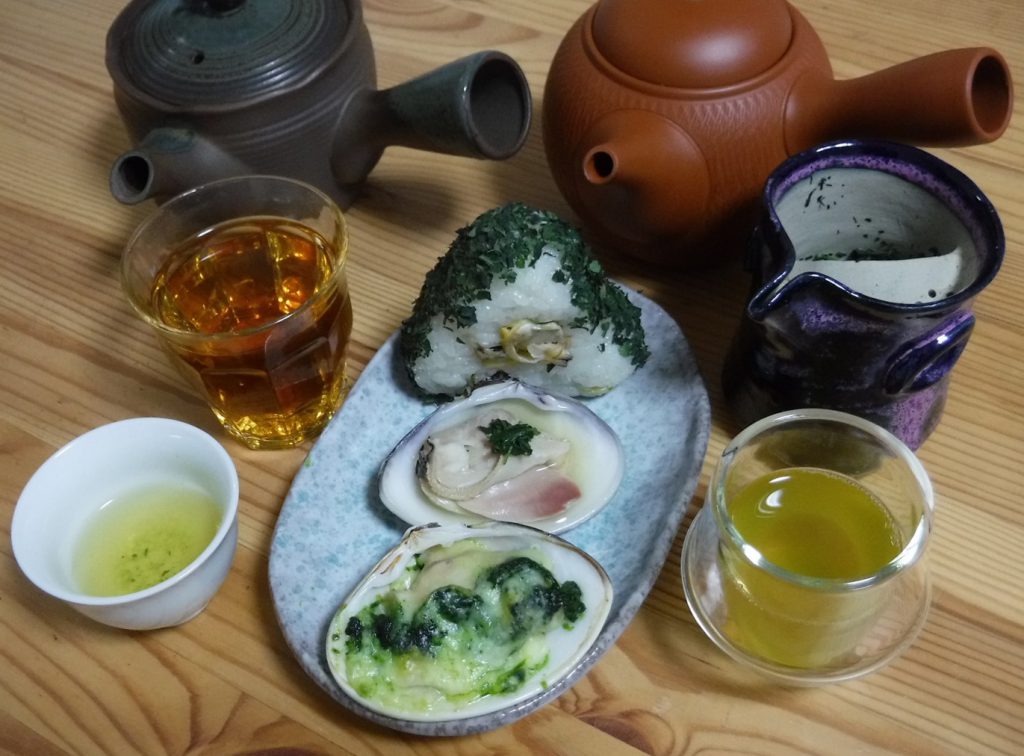
How to cook “Spring Clam Dishes Using 5 Types of Japanese Tea”
Ingredients
Sencha of first flush (10g)
Hojicha of the native variety ‘Kinzan’ (10g)
Matcha (10g)
Gyokuro (10g)
Tencha (10g)
Hamaguri clam (4 pieces)
Asari clam (approx. 400g)
Rice (approx. 250g)
Sake (approx. 100ml)
Mayonnaise (approx. 40g)
Cheese (as you like)
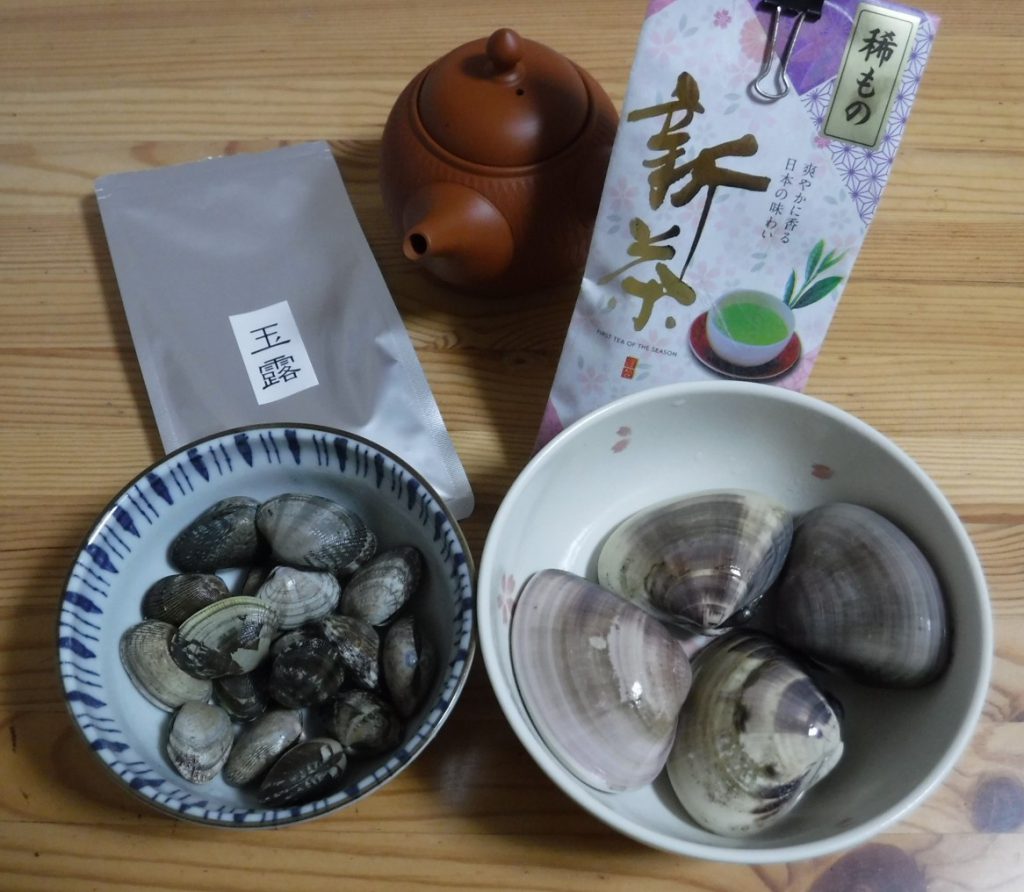
Procedure
(1) Cold-Brew of Sencha and Gyokuro
Brew Sencha and Gyokuro with cold water using the teapots which has large opening. The large opening allows us to pick tea leaves up by chopsticks after infusion.
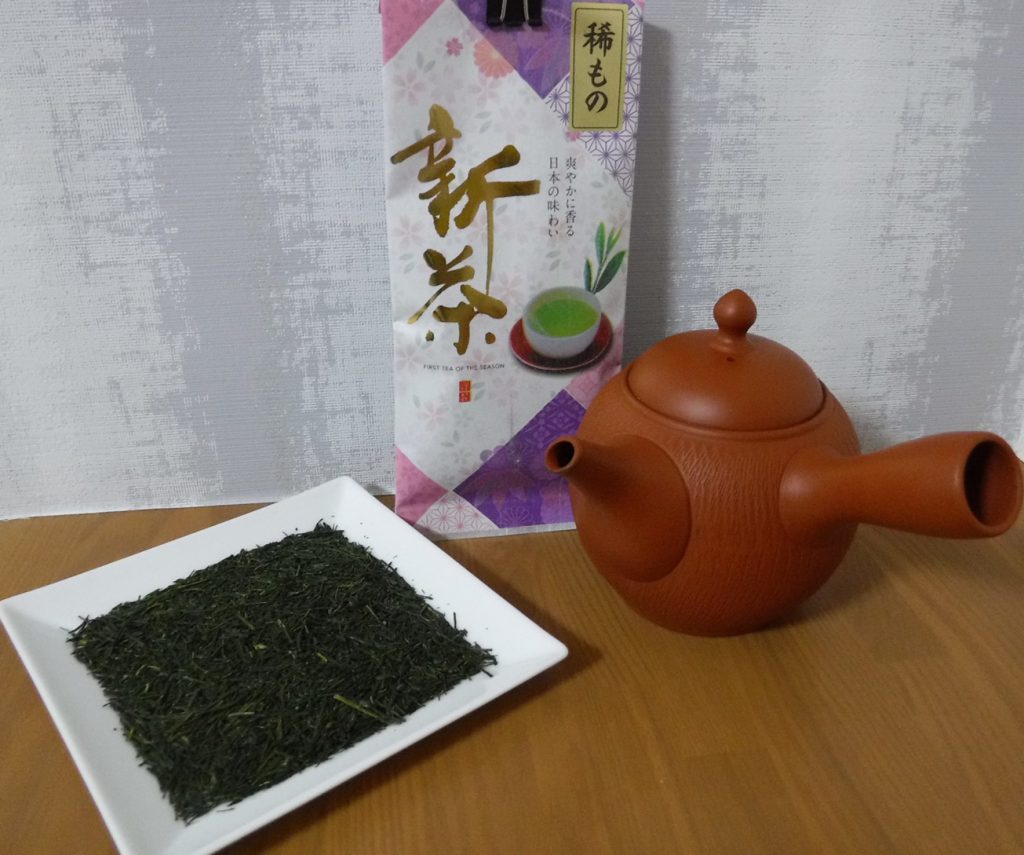
(2) Steaming clams with Sake
Put clams and add a small amount (approx. 100ml) of Sake in a pan. As for the amount of Sake, pour Sake up to the lower shell of Hamaguri. Keep heating the pan for approx. 5 minutes after Sake boiling.
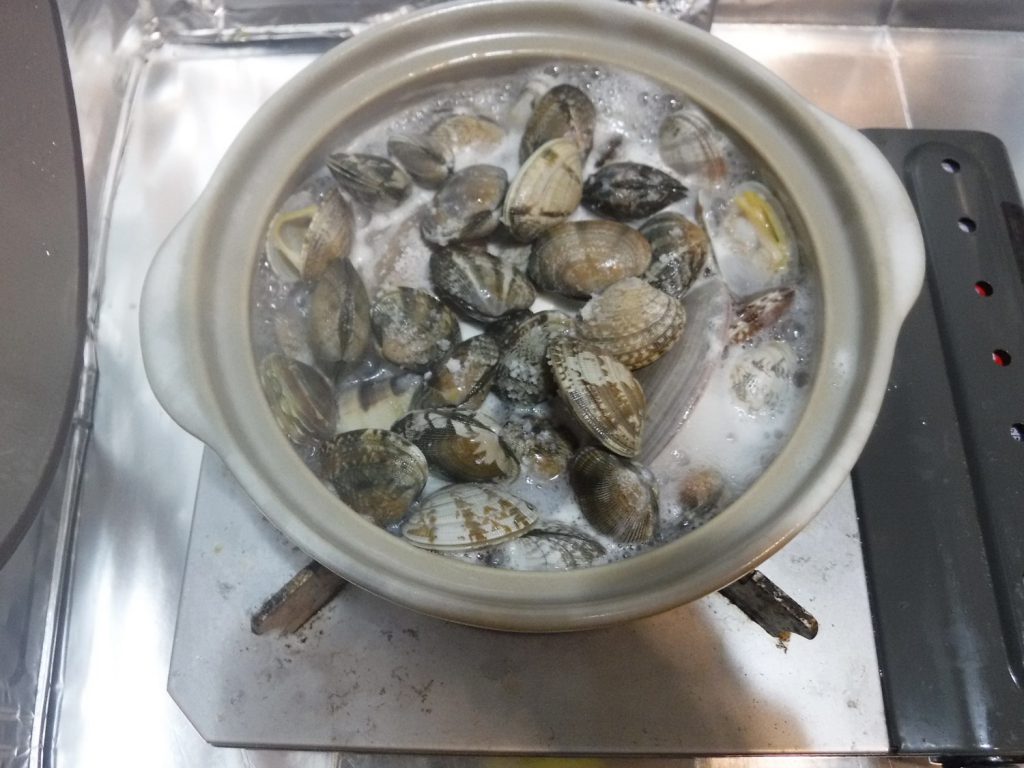
(3) Hamaguri soaked with Awase-Dashi of Gyokuro and clam
Put Hamaguri clam on its shell. And pour the soup into the pan up to the half level of shell, then pour the cold-brewed Gyokuro up to full level. Please top Gyokuro leaves after infusion as you like.
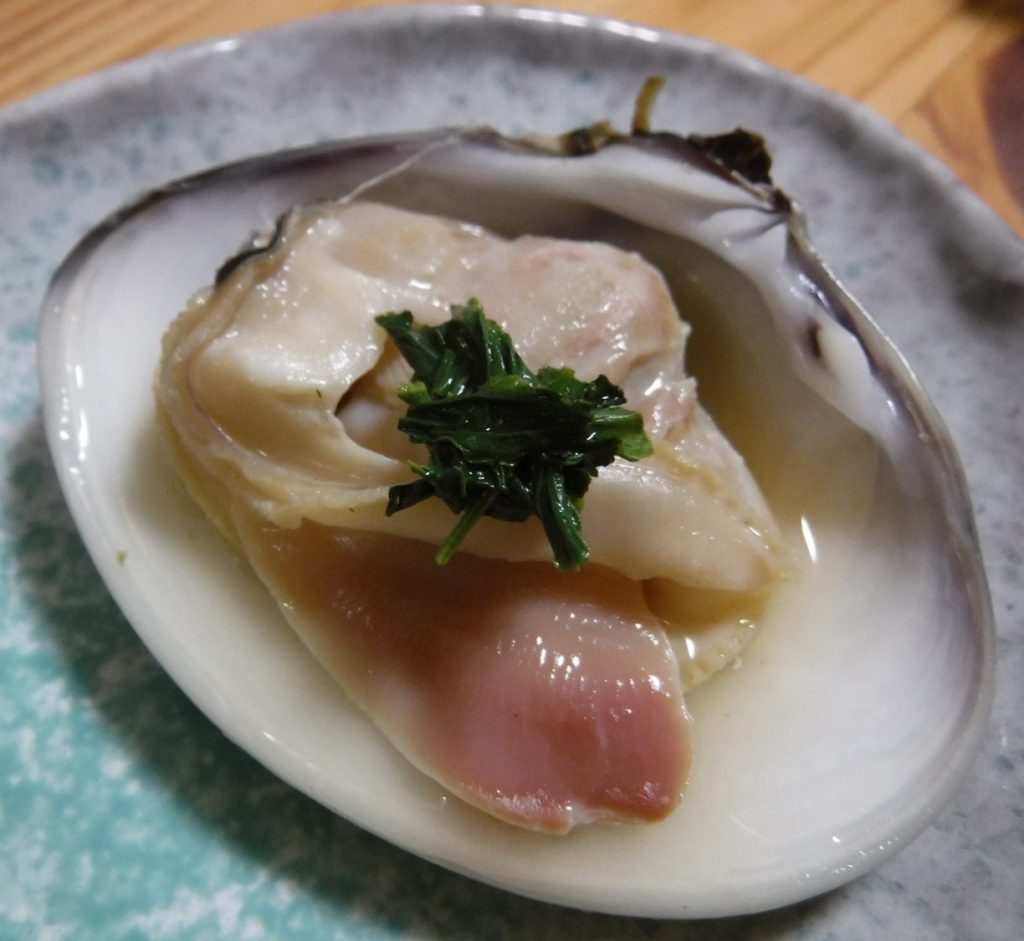
(4) Matcha clam gratin
Put Asari clams on the shell of Hamaguri topped with matcha mayonnaise and cheese. And then bake it by a toaster oven.
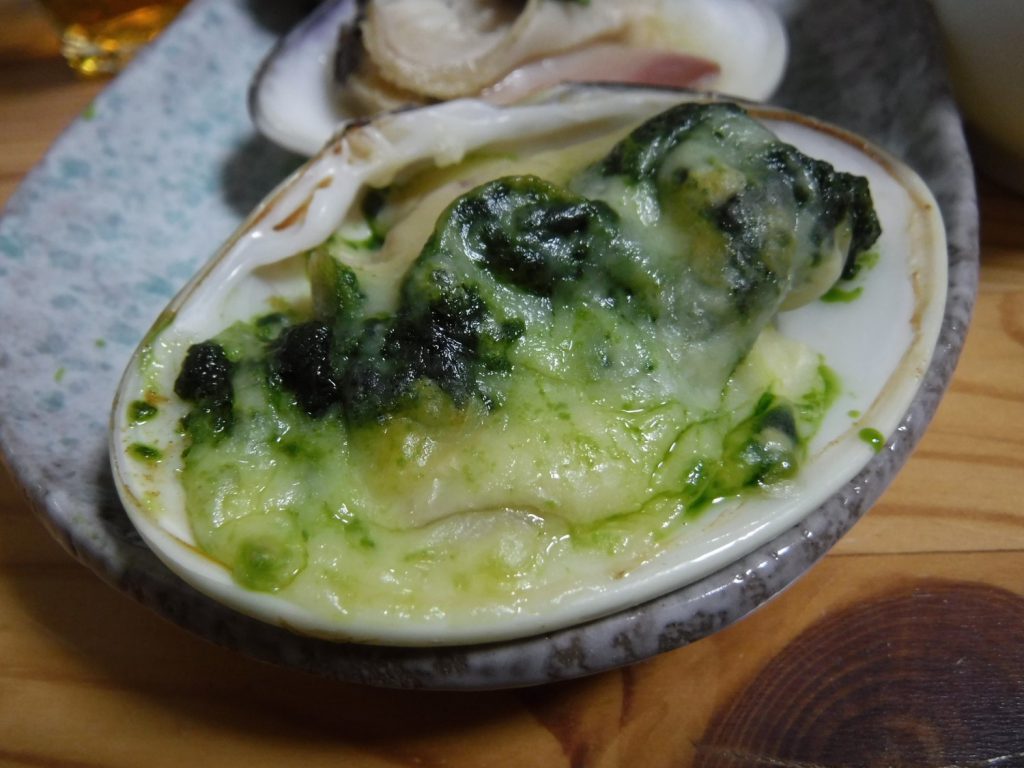
(5) Tencha Onigiri of Asari clam rice
Cook rice with Asari clams and the soup stoke of clams after Sake-steaming. Then shape the rice to Onigiri and cover the three side with Tencha, which is ingredient of Matcha and produced by drying tea leaves grown under the shade without rolling.
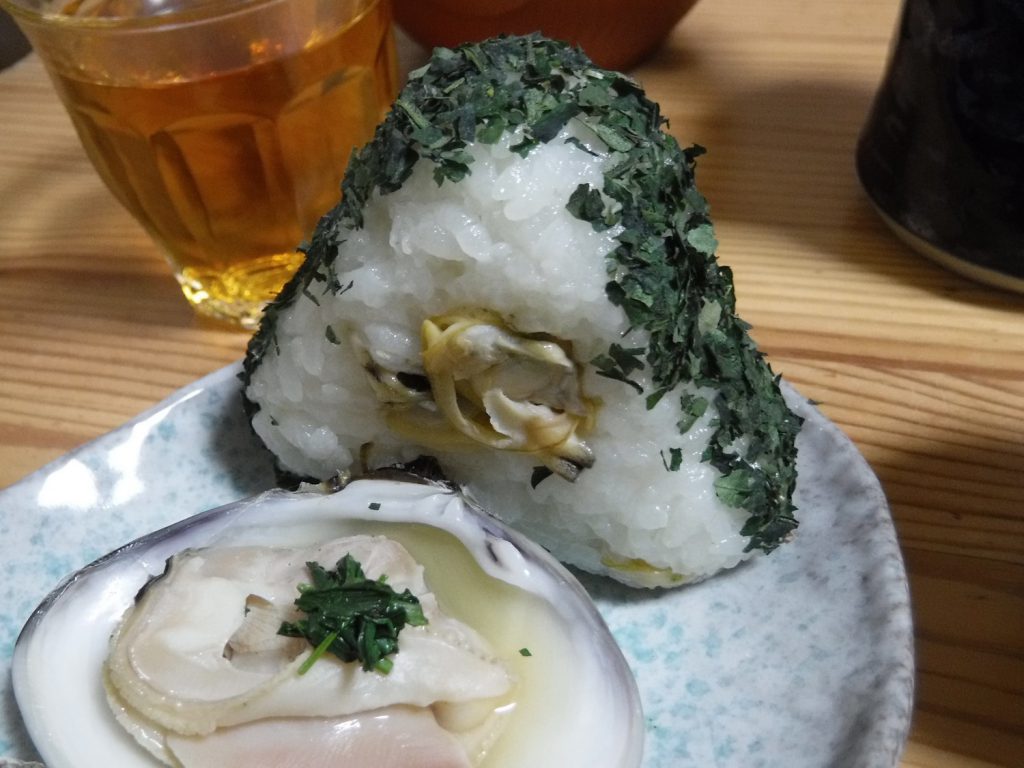
(Extra) Ochazuke of Tencha Onigiri with Hojicha
Brew Hojicha with boiling water. Then pour the Hojicha to Tencha Onigiri topped with tea leaves of first flush after infusion. If we have the rest of Tencha Onigiri, it is an option to try this Ochazuke with Hojicha.
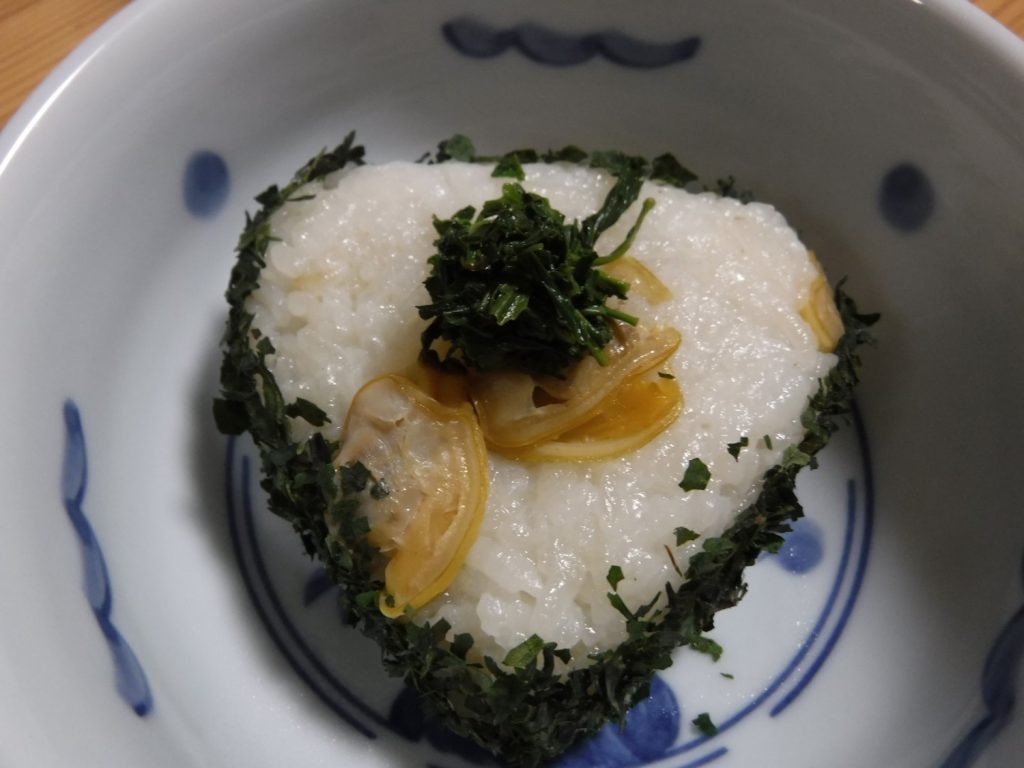
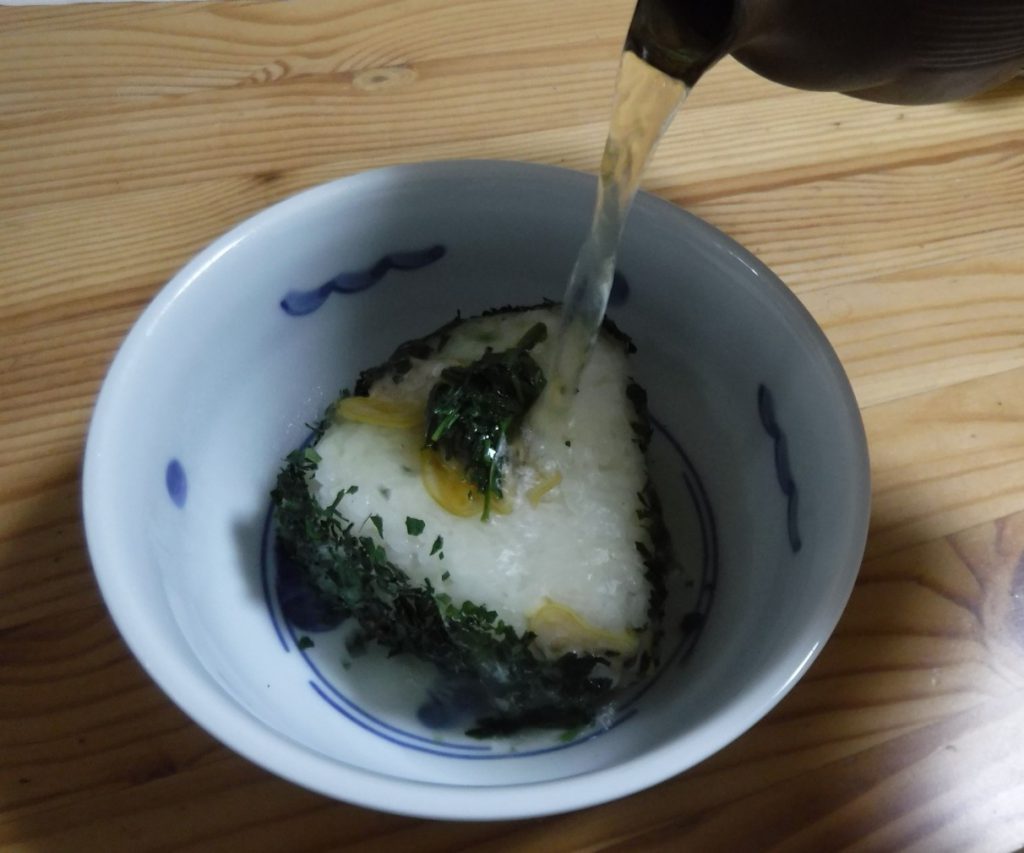
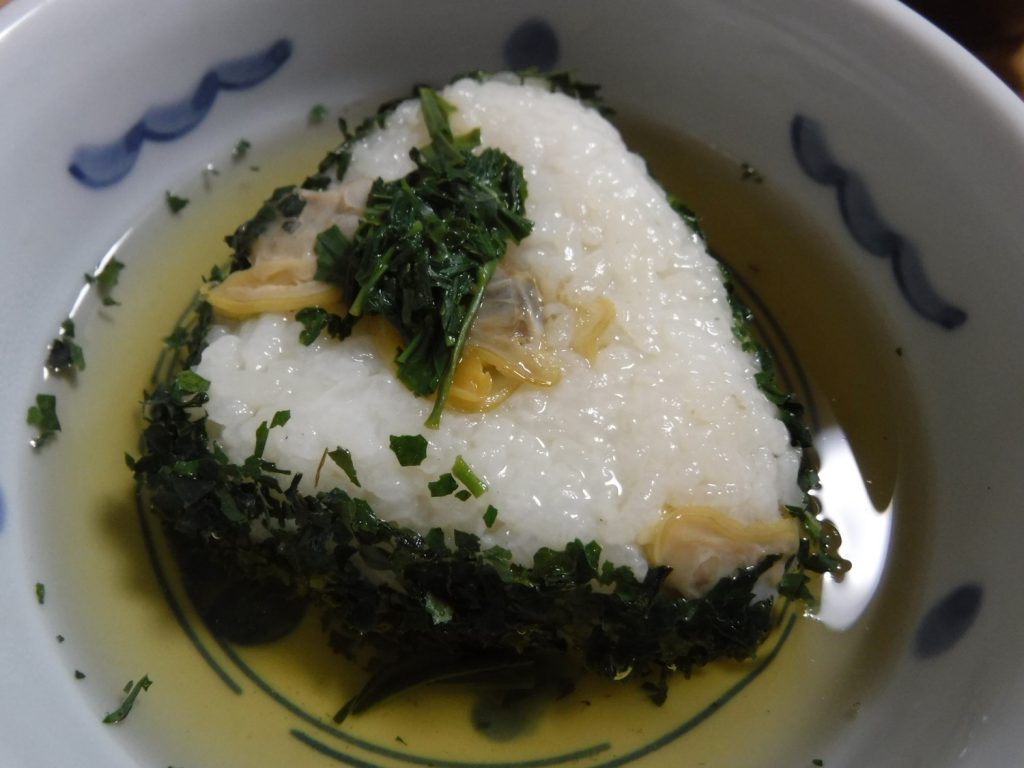
Postscript
The concept of this recipe is “Synchronizing” and “Subliming”, based on the presentation of Mr. Nishimura mentioned in the past post. The amino acids commonly existing in both of Gyokuro and clams, such as glutamic acid, could synchronize to enhance umami mutually. And co-existence of different umami components such as theanine, arginine of Gyokuro and adenyl acid, taurine, succinic acid of clams could sublime the flavor.
If you need the recipe written in Japanese, please refer to the attached document submitted to the Japanese Society of Tea Cooking.
